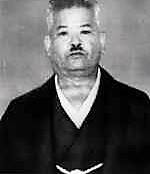Saburo Uehara (1890 – 1965) was one of the earliest and most significant students of Kanbun Uechi, the founder of Uechi-Ryū Karate. Born in Naha, Okinawa, Uehara initially worked as a farmer and later in the military. In 1925, he moved to Wakayama City, where, the following year, he began training under Master Kanbun Uechi—earning the distinction as one of Uechi’s most prominent early pupils.
By 1932, Uehara had earned certification as a teacher and opened his own dojo in Osaka, becoming one of the pioneering figures in spreading Uechi-Ryū across mainland Japan. He also contributed to the Okinawan teaching legacy by instructing at Kanei Uechi’s dojo, where he trained students like George Krob—thus helping strengthen ties between the original Okinawan base and emerging Japanese practitioners.
Uehara is particularly noted for creating the Seichin kata, a bridging form that was formally adopted into the Uechi-Ryū curriculum, raising the total number of official katas to eight.
He was also the teacher of Shinyu Gushi, a renowned Uechi-Ryū master who later became widely recognized for his teaching in the United States. Through this connection, some traditions suggest that Uehara may have transmitted knowledge of the Mee no Jiffa (hairpin) kata to Gushi. Since this kata closely resembles Kusanku Sho of Shōrin-Ryū—originally systematized by Ankō Itosu—it is possible that Uehara integrated elements of Shōrin-Ryū practice into his instruction, adapting them within the framework of Uechi-Ryū.His legacy endured through his family. His son, Isamu Uehara (born 1939), became the director of Uechi-Ryū Karate-Do in Tokyo. Another son, Uehara Takenobu, emerged as a respected Uechi-Ryū master and was honored by Okinawa Prefecture as a Living Cultural Asset Holder, recognizing his role in preserving this traditional martial art.


